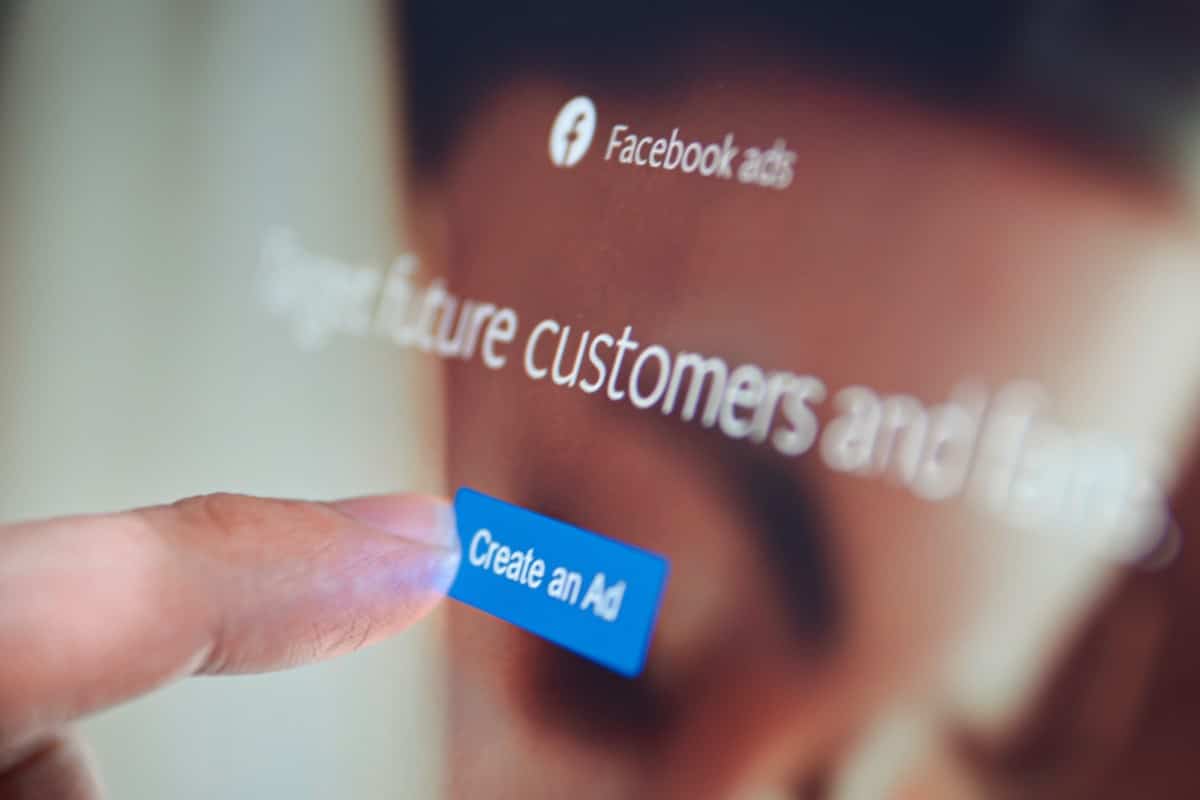
For years, Facebook ads have been one of the best ways to reach a targeted audience with your products or services on social media. After all, Facebook has a massive user base, so no matter what you happen to be selling, there is sure to be a segment of the Facebook audience that will be receptive to your message. In addition to the huge collection of users, Facebook ads also provided powerful targeting tools to make sure your promotions were displayed to the right people.
In 2022, however, things have changed a bit. While Facebook ads remain an important piece of many digital marketing strategies, there are some important changes that you need to understand. In this article, we are going to highlight some of those changes along with offering some general ideas on how you can utilize ad targeting to effectively reach the right audience for your business.
What is Changing?
If you have used Facebook ads previously, you already know that one of the most powerful aspects of this marketing tool is the ability to segment your audience down to incredible levels of detail. Thanks to the volume of information that Facebook has available regarding each of its users, advertisers are able to pick and choose exactly who they want to reach with their ads. Whether you want to sort by simple demographics like age, gender, or location, or more specific filters like interests and connections, the possibilities are virtually endless when using this tool.
Recently, however, there have been some concerns aired about some of the filtering options that were available through Facebook ads. These filters allowed businesses to target audiences based on potentially sensitive information around personal identity or beliefs. To alleviate those concerns, the platform has removed the ability to target using four specific categories. Those categories are political beliefs, religious practices and groups, health causes, and sexual orientation. As an advertiser, you are no longer to segment your target audience based on user information in any of these four categories.
So, does this change mean that Facebook ads are no longer a useful tool to find your audience? Hardly. Facebook still represents a massive opportunity to grow your business when you use the ads platform in an intelligent, creative manner.
Finding Your Audience on Facebook
When you first dive into the world of using Facebook ads, it’s easy to be overwhelmed by the possibilities. Regardless of recent changes to targeting options, there remains an incredible amount you can do with this tool, and you might struggle to know where to start. To avoid getting bogged down by that kind of overwhelming feeling, we have three pieces of advice to consider before you even open up the Facebook ads tool to get started.
- Know your audience. You shouldn’t be digging into Facebook ads to figure out who you want to target. You should already know before building your campaign. Spend some time to do research on your ideal demographic and determine the basic elements you will use to segment the potential audience. Are most of your likely customers male or female? How old are they? What do they like to do, and where do they live? This research can be performed using past customer data, if you have it, or you can lean on research that has been performed and published by others in your industry. While there is bound to be some refining of your targeted categories once you get started, you’ll have a much better chance of getting off to a good start if you are prepared with a good foundation of data for that first campaign.
- Determine a spend limit. Knowing how much you are willing or able to spend on your Facebook ads is another important decision to make in advance. If these will be your first Facebook ads, it’s smart to get started gradually with a modest investment while you learn the ropes. Knowing how much you want to spend is important because this can encourage you to be even more specific with your targeting. Only spending a small amount on ads means you can’t reach a huge audience at the start, so you might as well dial in your campaign to only target the absolute best prospects for your ads.
- Have a desired action in mind. What do you want someone to do when they encounter your ad on Facebook? The obvious answer might be to make a purchase, but that’s not always the way these ads are used. If you are using Facebook ads to simply introduce people to your brand and get them into the top of your funnel, this ad campaign might be more about awareness and education. Whatever you want to happen as a result of your ads, have that objective clearly in mind while going through the process of creating a new campaign.
Some Creative Methods
If you take the time to think through the three points we listed above, you’ll be well prepared to build your first campaign to run Facebook ads. And, thanks to the easy-to-use interface that is offered by Facebook, you should have little trouble with the technical side of getting your campaign up and running. Just follow along with the various steps in the process and your ads will be live in no time.
To help you optimize this new campaign and get the most out of your investment, we’d like to offer up a few useful tips that might take your campaign performance to a higher level.
- Pick platform and device. Throughout this article, we have been referring to this form of advertising as running “Facebook ads”, but it actually goes deeper than that. When you buy ads through Facebook, you can display them in many places, such as Instagram and the wider audience network that has been established for even greater reach. Also, you can decide if you want to show your ads on all devices, desktop only, or mobile only. Our recommendation for your first campaign is to start narrow and worry about casting a wider net later. So, maybe you start out with ads that run only on Facebook and only on mobile devices. This is just a starting point, of course, so the additional options that are available could always be explored later.
- The power of dayparting. One of the best ways to get your money’s worth with an ad campaign is to do everything you can to only reach the right audience. Dayparting is one way to do just that. With this feature, you can control during which parts of the day your ads will be displayed. So, for example, if you want to run ads that drive phone calls to your office, running ads only during business hours might be a smart move. This will avoid wasting spend on clicks that find you are closed for the day and decide not to call. If you later add hours to your schedule or create a form that can be submitted around the clock, you can update your dayparting plan accordingly.
- Lookalike audiences are helpful. Leveraging the vast knowledge and insight of a platform as big as Facebook is another way to get good returns. That is seen in the lookalike audiences feature, which is where the platform will automatically find audiences that mirror the one you have manually selected with the categories you choose. In other words, you may have carved out a niche that is smaller than necessary, and the platform can help you find the rest of that market to make sure you don’t miss out on valuable opportunities.
- Use connection targeting carefully. The connection targeting feature is an option that will allow you to show ads to those who are already associated with your brand. This sounds great, but it needs to be used wisely. If you are trying to make sales to prospects that are already part of the way along the buying journey, connection targeting can be helpful. On the other hand, if this is a brand awareness campaign, you won’t want to waste ad spend on people who already know your brand and your products.
Why Targeting Matters
For the relatively new business owner, or the new marketer, it’s tempting to think that casting the widest possible net is the best strategy for promotion. You might look at it as a simple numbers game; if you expose a certain number of people to your products and some percentage make a purchase, showing your products to more people will mean more sales. That general concept is on the right track, but there are a couple of important details that point to the value of targeting your ads as accurately as possible.
First, targeting is important because the percentage of people that convert into customers will drop dramatically if your audience isn’t accurately targeted. For example, if you show ads to 1,000 targeted individuals and 10 make a purchase, you’ve secured a conversion rate of one percent. However, if you expand your reach and show the ads to 10,000 people who are less targeted, the conversion rate will almost certainly drop. And, as the conversion rate falls, your cost of acquiring a new customer will go up, and your ad campaign may no longer be profitable.
So, first and foremost, targeting is important because it helps you get the maximum return on your marketing investment. The difference between a profitable campaign and one that winds up in the red can come down to nothing more than how well you target the ads that you run. But the benefits of targeting don’t stop there. You’ll also find that a targeted campaign is easier to manage and requires less of your time and attention to perform well. With a wide-reaching campaign that is presented to as many people as possible, you’ll have to spend a lot of time sifting through the results, rewriting ads, and more. Without good targeting, spending more time—in addition to more money—on the campaign is inevitable.
Getting Started with Facebook Ads
Is it still worth exploring what Facebook ads have to offer after the recent changes that were made to the targeting capabilities of this platform? Absolutely. There is still a lot to like, and this method of showing ads to an interested market remains one that you can’t afford to ignore. Take the time necessary to build a clear profile of your target audience and then use the categories and filters offered by Facebook ads to make sure your messages land in front of the right eyes. Good luck!
Most Popular Articles

Seeing Favicons in Your Google Search Results? Here’s Why…
Have you noticed anything different in your Google Search results lately? Google added tiny favicon icons to its organic search results in January. It was…

Business Growth and Digital Marketing News & Tips 11-17-24
Are you encouraging and rewarding innovation? Lee Cockerell is the former Executive Vice President of Operations at Walt Disney World. A lover of traditional red…

Business Growth and Digital Marketing News & Tips 11-27-24
A culture of gratitude "Feeling gratitude and not expressing it is like wrapping a present and not giving it." – William Arthur Ward Beyond being…








